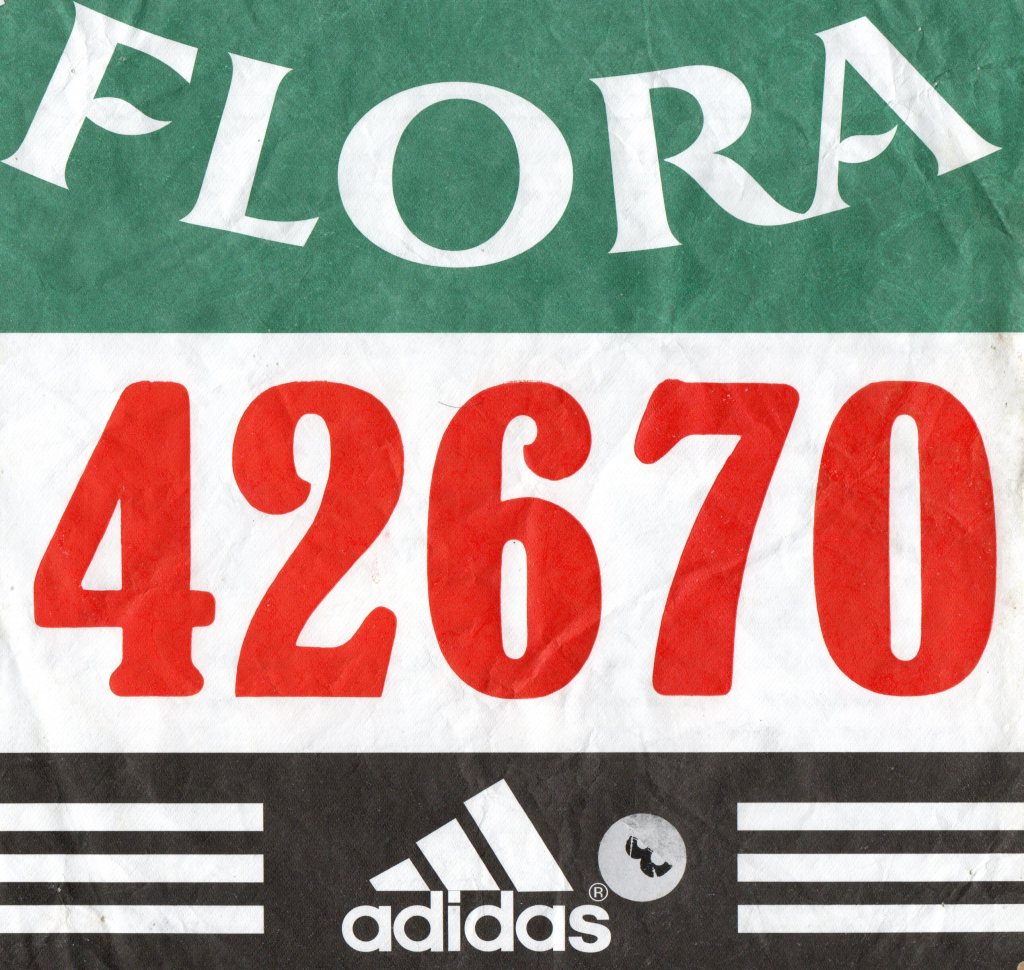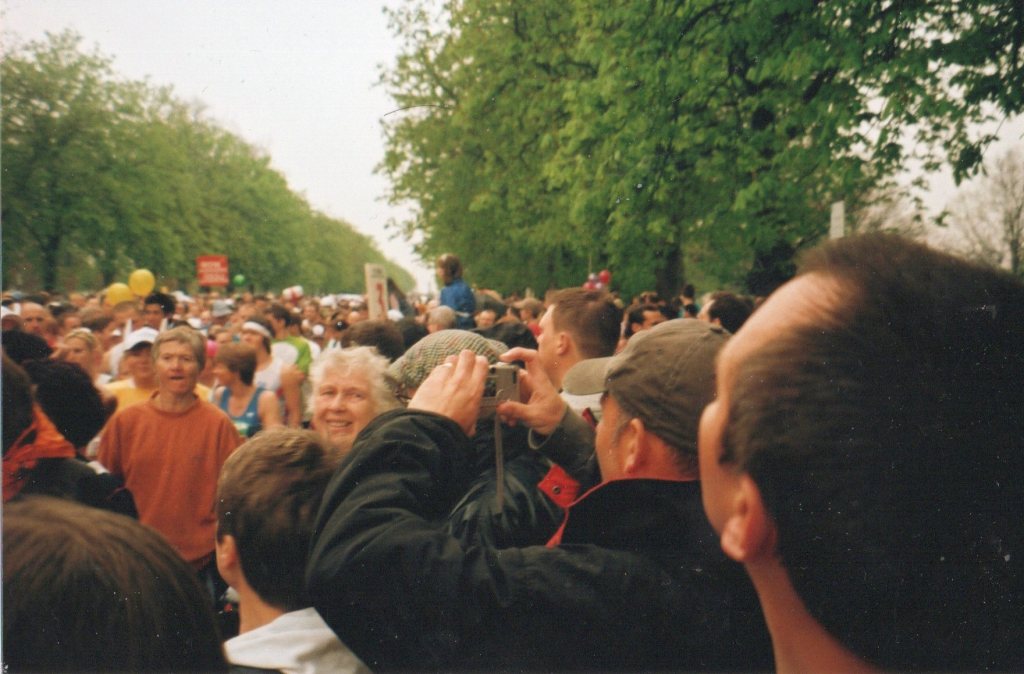Do you notice more runners on the nation’s streets from January to April? It’s likely they’re training for the London Marathon, which usually takes place towards the end of April. You are witnessing them meld into athletes, just as winter melts into spring. Most of them have got 16 weeks of this, with just a couple of days off a week. Here’s how it went for me…
THE STARTING LINE: Wow! A place in the 2006 London Marathon running for the NSPCC! A place at last, at the grand old age of 48! Elation soon dissolves into knee-wobbliness as I think of what lies ahead. In the next few months I learn that the training is a marathon in itself.

1: You don’t need any equipment to go running, just a good pair of trainers.
2: And some padded socks, blister plasters, support bandages, lycra shorts, over shorts, tracksuit bottoms, nipple plasters (hard to get off a hairy chest), breathable mesh tops, lightweight waterproof jackets, beanie hat, gloves, sports watch (with GPS and computer), sports drinks, sports snacks, glucose gels, jelly babies, heart-rate monitor, mobile phone holder, fancy water bottle, fancy strap thing to stop glasses falling off, iPod (best investment of the lot), radox, vaseline, deep freeze pain spray… Of course, I didn’t bother with a lot of this stuff.
3: Finding the right trainers is a big issue. At the specialist shop Run and Become in London’s Victoria you have to run down the street to test each pair you try on. Each time I do so I’m accosted by a guy selling magazines. “Big Issue, sir?” he says, smiling, as I jog by. While trying out the third pair I relent and buy a copy; it is a fundraising event after all.
4: My training plan is the beginners’ ‘just about gets you round’ schedule from my copy of Running Is Easy (no it jolly well isn’t). I realise I’m not even up to that, so I plan some pre-training training in the run-up to Christmas. My goal is simply to complete the course without stopping, without walking. I don’t have a specific time in mind but within five hours would be nice.
5: Pretty soon I realise that it’s not just about getting fit and building stamina; it’s about building mental strength, too. You end up talking about it quite a lot. The NSPCC is very supportive with emails and newsletters – they don’t want their jogging investments letting them down.
6: Sticking to the schedule isn’t easy and I expect/hope to come down with one of my usual heavy winter colds at any time. Sometimes I laugh when the schedule stipulates medium-pace, or fast. I’ve only got one speed mate, and it’s neither of those!
7: The organised training races are fun though: warm-up stretches at Eastbourne in a freezing gale; super-friendly Crumlin in Wales; the inspiring finish in a packed Madejski Stadium in Reading.

Halfway round the Reading Half
8: Sometimes it hurts: nipple rash, sore ankles, stiff joints and stomach cramp. The time I half-loped, half-skipped home like a child pretending to be a horse.
9: Laura (coach and sister) makes sure I do the training. Her 5.30am alarm text messages keep me on track.
10: As do the tracks on my iPod; I air-drum and sing as I run. Passers-by stare at the mock water station Laura sets up in the local park to get me used to drinking while running.
11: With two weeks to go it’s starting to come together: the training; the mental attitude; the sports massages; cross-training at the gym; soaking baths; resting; proper diet…
12: ‘Nothing tastes as good as slim feels’ I tell myself day after day over yet more porridge, bananas and pasta.

13: I collect my vest and number at ExCeL and start to think about the big day: how to avoid the need for loo stops; the mantras I’ll be repeating to myself, ‘strong, determined, focused’, that kind of thing. For once, there’ll be no iPod pumping punk classics to help me along, just the sound of the crowd.
14: I’ve pledged to raise at least £1,500 for the NSPCC and I meet the target with a welcome last minute flurry of sponsors at my JustGiving site. Fundraising is easier than I thought it would be. People are surprised into giving money to a lazy-arse like me .

15: The night before the race is all calm preparation: ironing my name on the shirt, packing, searching out safety pins for my race number, puzzling over the timing chip, good luck text messages from friends and relatives.
16: The big day arrives and what a day! We get up early to travel to Greenwich on packed trains, then crowds of us shuffle to the start. I do my warm ups while waiting in the queue for the toilets.

17: The start of the race is chaotic and crowded, the atmosphere friendly and expectant.
18: I really enjoy the first 18 miles: thousands of spectators smiling, waving and cheering as I settle into a good running rhythm. Some of them goading from pub doors, as they slurp mid-morning pints. Some of them offering handfuls of dolly mixtures and jelly babies; but I still never accept sweets from strangers…

19: In Wapping, the fun and excitement turn to pain in the rain. I see some friendly faces and give sister Laura a hug while running on the spot.
20: Somehow I keep going through the agony of the last few miles, urged on by cheering crowds. A well-dressed man, slightly the worse for wear, hurls abuse at us: “Bah! It’s jusht masses for the classes!” I think I know what he means.

21: The NSPCC said to raise your arms as you cross the line. I honestly thought I had. Elation and relief mix with pain and nausea. I feel great. I can hardly walk.
22: My time is 4 hours, 52 minutes and 41 seconds. No stopping, no walking.
23: I finish 24,212th out of 32,983.
24: I raise £1,746 for the NSPCC.
25: I’ve had not even a sniffle in four months of training in the cold and wet.
26: FINISHING LINE: Not one cold all winter. Something of an achievement, that.
So here’s to all you joggers, who go round and round and round.

You must be logged in to post a comment.